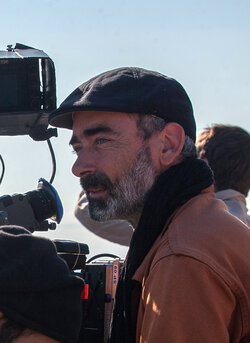Festival de Cannes 2019
Film for the Mayor
Interview with cinematographer Sébastien Buchmann, AFC, about his work on Nicolas Pariser’s film "Alice and the Mayor"The Mayor of Lyon, Paul Théraneau, is not doing well. He hasn’t got a single idea left. After thirty years of politics, he feels completely empty. In order to solve this problem, it is decided to assign a young and brilliant philosopher, Alice Heimann, to be his deputy. A dialogue is created, which brings Alice and the mayor closer to one another and begins to eat away at each of their convictions.
How did you begin artistic preparation ?
Sébastien Buchmann : Nicolas spoke to me about Woody Allen’s film Hannah and Her Sisters. This was a reference that surprised me at first. Carlo Di Palma shot that film and the lighting is really invisible. Why did he choose that film, and not a film from the Gordon Willis period, where the photography is more affirmed ? The only thing that you can say is that the actors are consistently put in their best light and are lit with “discretion”. I had to keep the light very soft and try to feature the actors as best as possible. But Nicolas also likes artifice, and you feel it in the screenplay, he likes theatre.
The crucial choice of film
SB : We’d wanted to shoot Nicolas’ prior film, Le Grand jeu, in 35mm, but we weren’t able to do so because of budgetary reasons. At the end of shooting, I just slipped into the producer’s ear that Nicolas shoots very few dailies, between 35-50 minutes on average per day, so it would be with a director like him that it would be possible to shoot in film ! When the film began, and Luchini accepted the role, the certitude of financing reassured the producer, who accepted a shoot in 35mm. The director wanted everyday locations : offices with neon lighting, white walls. The stylization of the image wasn’t going to come from the locations itself, it would be made possible by the use of 35mm. Before preparation, I did comparative tests of 2 perf and 3 perf and showed them to Nicolas and to the producer. The producer reacted positively to the 3 perf. He wanted the film to have a bit of pizzazz. On Michaël Hers’ last film, Amanda, which we shot in Super 16, I’d really liked the Primos specially for the part of the film that is in 35mm 2 perf 1.85:1 and that I find really beautiful. But this time around, we needed the transparency and the majesty of full format 35mm : we shot in 35mm 3 perf with Primos, which is the same choice of lens I’d made on Nicolas’ prior film, La République, a film which is close to Alice and the Mayor in terms of tone, story, and even sets, because there was a lot of backlighting with the big windows.
When the locations are very large…
SB : …the choice of film and the Primos is even more pertinent !
Nicolas had two requests : 35mm and to shoot the mayor’s office in studio. In Lyon, the mayor’s office is really facing the Opera. He wanted to shoot in studio because it was impossible to shoot in the real office ; moreover, we didn’t like it, our model was something more like the office of the Mayor of Paris. The idea was to shoot with green screens in the windows so that we could put the image of the Opera behind them, so that it would be visible in all of the office scenes. That quickly became impossible for financial reasons. We shot the mayor’s office, and a lot of other locations, inside of the Lyon Prefecture and we set up curtains, because Nicolas didn’t want the real view to be seen. That’s why there are constantly windows and backlit characters.
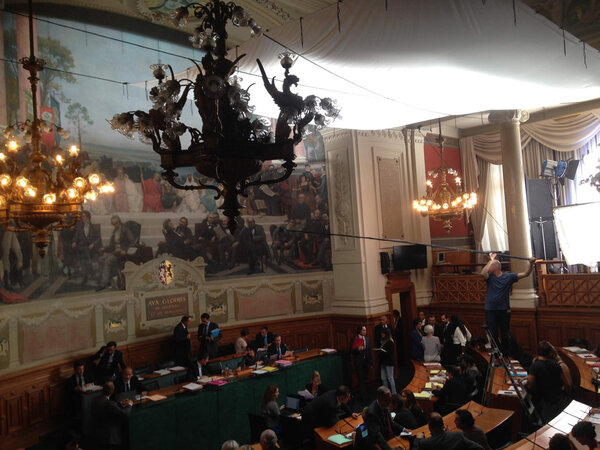
Lighting design and the importance of the curve…
SB : The lighting is simple and pretty soft. Except for an 18kW on a cherry picker for the mayor’s office, the sources are mainly indirect, and sometimes even without a flag, lighting the ceiling. I used an Octaplus, a sort of octagonal chimera, I had a big one and a little one for the faces lit with a boom. Sometimes, there isn’t even any electric light source, such as in all of the corridor scenes or when the characters are walking around in the city hall.
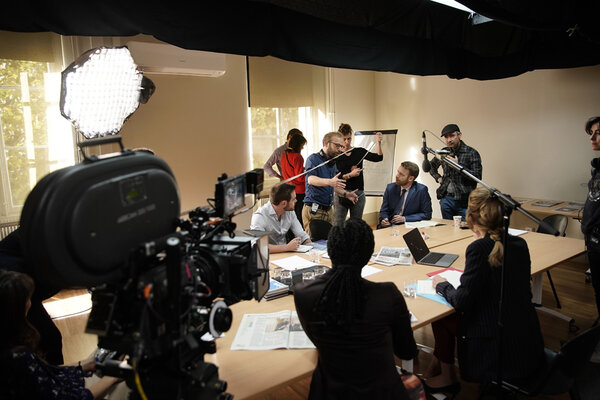
Despite this very soft lighting, black is still present thanks to the film itself. That’s still the main advantage of film, the way that it redistributes black and white on a curve that brings a stylization that you have to invent in digital using luts, which ends up being very complicated to do. The choice of contrast is essential, in both film and digital, and I like film, which allows me to “forget” or “lose” details more easily than in digital.
Was filming night scenes with real night a choice ?
SB : In Nicolas’ earlier film, Le Grand jeu, starring Melvil Poupaud, we shot with an Alexa, meaning in digital. We did a long travelling shot at night in the countryside…well, not exactly, because we were in the suburbs and the sky was a bit pink because of the lights of the city. So I lit a lot and worked with a relatively closed aperture to keep true blackness and not see the countryside at all - we were supposed to be in the Creuse ! On Alice and the Mayor, we also did a night-time travelling shot along the Saône river. I installed a few Par lights along the path, and I put the light on a boom for the actors. But in the end, we shot those night-time scenes with very little lighting. In colour grading, we might have been able to come up with some more body in the image, especially in the water, but I wanted to keep the blackness dense and the fact that you can just see or make out that the water is there is enough.
Shooting in cars, a true subject for discussion
SB : In the film La République, there are many scenes shot in cars and when we began preparing this film with Nicolas, he said “it’s horrible, I’m going to end up in the boot again !” I suggested that we shoot all the scenes with Fabrice Luchini with a green screen. Besides the practical advantage, we thought we’d end up with the slightly artificial or theatrical quality that we would have had with the office if we’d shot it in studio. We first shot the plates so we could choose them before shooting the scenes and decide whether the sequence would be sunny or grey weather. We had to invent lighting that would bridge the day and night ambiences : the sparks would turn flags or the spots directly to reproduce light moving over the characters. I’ll add in passing that we shot in Lyon’s cinema school, la CinéFabrique, which helped us a lot by offering us, amongst other things, a place where we could shoot with a green screen, a place for the set design team, and three of our interns came from the school !
A scene at the Opera
SB : The Lyon Opera is a very strange place. It was modernized by Jean Nouvel and it’s become entirely black inside ! He’d come up with little lights (fibre, since LEDs didn’t exist yet) on the seats that lit the audience’s faces. And the light reflected off of their faces is what gives ambience to the room before the curtain goes up. So, you have a very low level of lighting !
We had one day to shoot that enormous sequence. We had to come up with simple and rapid solutions, because we could not enter the location before 6 am and we had to be completely out by 6 pm. We’d installed an enormous white velum that we’d been able to stretch above the hall the day before and the Opera’s electrical team had pointed profile spotlights on the velum, which generated a very wide and very soft ambience. Sky panels on stands allowed us to obtain that slightly warm colour in backlighting.
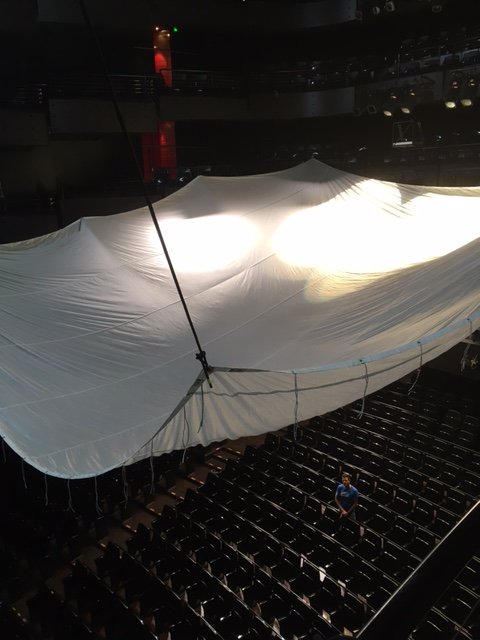
We needed three different effects : the hall with the house lighting on, then off, and then the effect of the show itself, which we created with cold-temperature Sky Panels. Everything was controlled by console. We had very little time to organize all of these effects, so it was really the sequence where the gaffer and his team showed what they were made of !
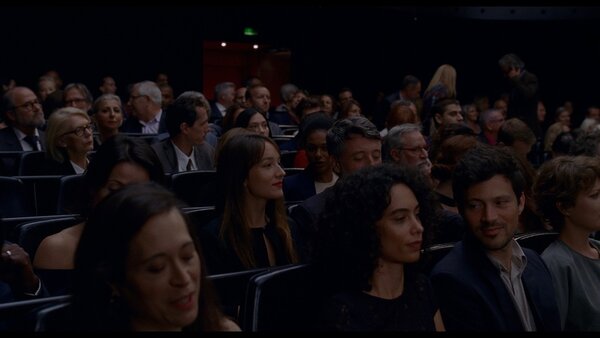
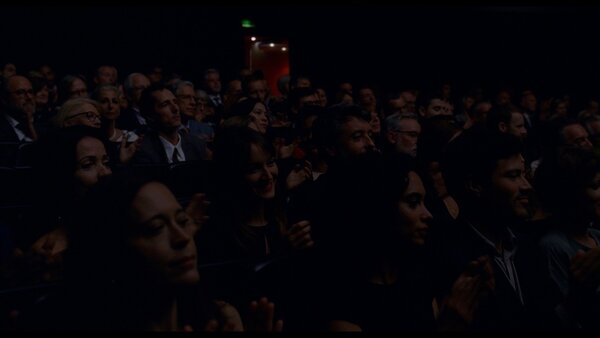
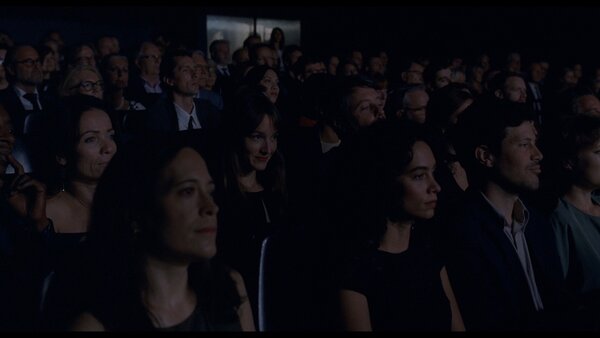
Editing and filming method
SB : After scouting, we made a shooting script for several sequences. Nicolas really likes master shots. Let’s say that he prefers simplicity in the shooting script, there are always very few shots. But shooting a master shot isn’t always a synonym for simplicity. We shot with Anaïs Demoustier for a week and then Fabrice Luchini arrived. At the start, we were afraid we wouldn’t be able to do master shots because Fabrice had a lot of lines and it was complicated. Nicolas really wanted to shoot the speech preparation scene, which happens at the end of the film, with a master shot and we did it without even shooting extra shots. We did maybe five takes, of course with a lot of rehearsals, but it went very well. The camera was travelling on a dolley, with floor blocking by the gaffer everywhere !
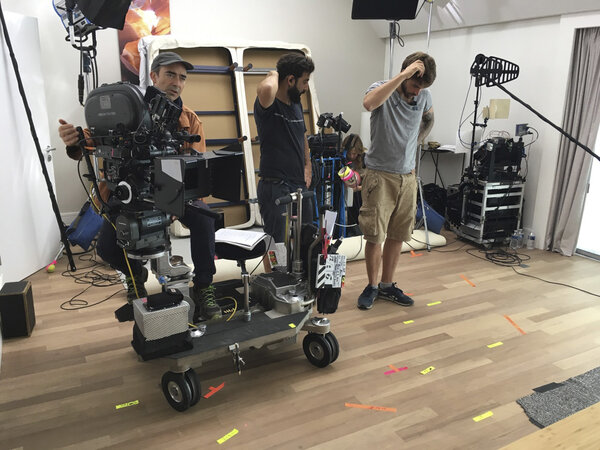
The artistic inspiration that can’t be seen in the film
SB : Discussions with the director don’t always come through in the photography. Nicolas and I discussed films that we liked or didn’t like. He would tell me about recent films shot in digital whose image he didn’t like at all. He’d said to the producer, when some small budgetary problems arose, that his greatest ambition would have been to shoot a film like Eric Rohmer, so to shoot a sequence with Fabrice Luchini and Anaïs Demoustier was what he really liked. Getting rid of sets and extras didn’t bother him so long as we would be filming those two actors in 35mm. I knew his taste for Rohmer, of course… And his reference to Hanna and Her Sisters wasn’t really enough for me to come up with the image of all of those scenes. For La République, Nicolas had shown me Alan J. Pakula’s All The President’s Men, lit by Gordon Willis. The photography of that film is both very present and very simple. One shot in particular stayed with me because of how daring it was, and I kept that image in the back of my head. That shot is like a painting for me, and I thought about it while shooting Alice and the Mayor, even though the image of our film is nothing like it !
(Interview by Brigitte Barbier for the AFC, and translated from French by Alexander Baron-Raiffe)
 En
En Fr
Fr
